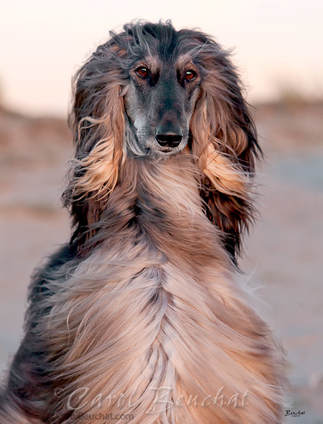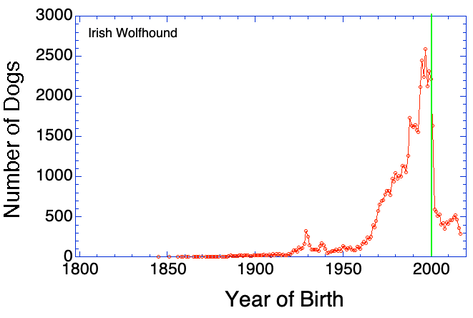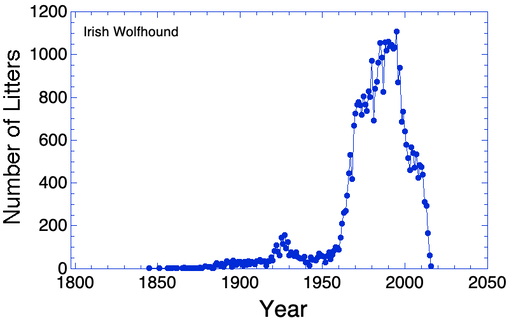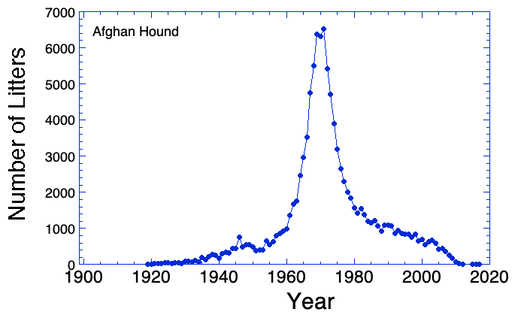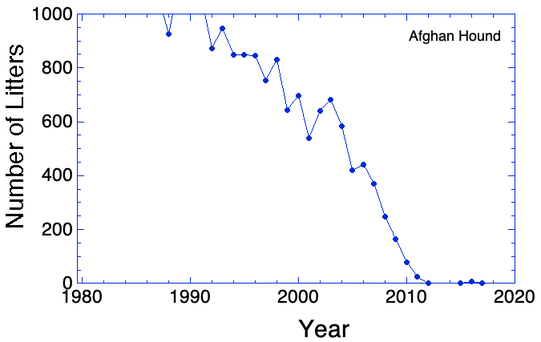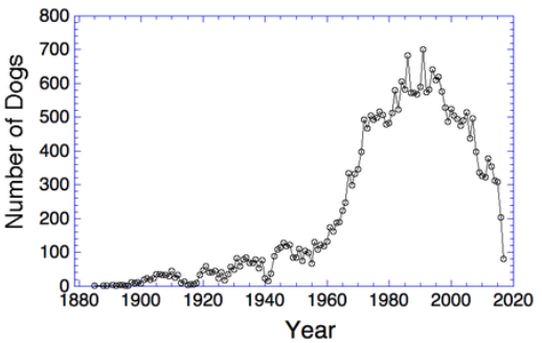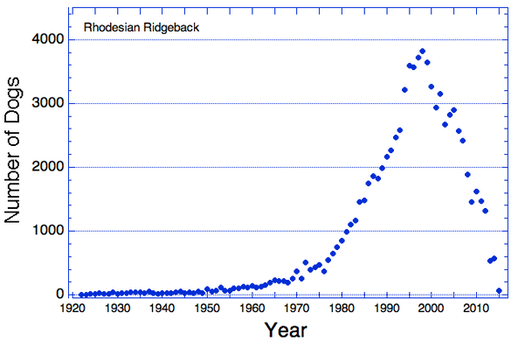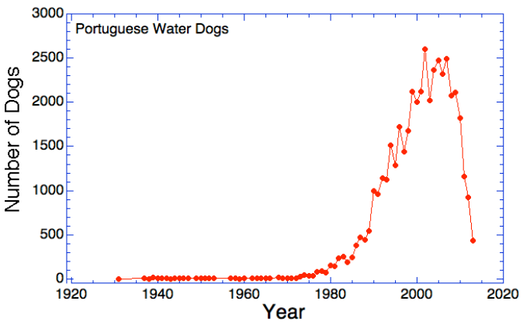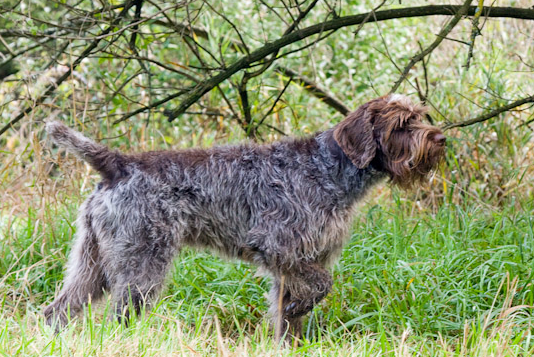| I have pedigree databases for a number of breeds that were compiled by breeders and provided to me for genetic analysis. These include the Irish Wolfhound, Afghan Hound, Belgian Tervuren, Rhodesian Ridgeback, and Portuguese Water Dog. I have compiled the information for number of dogs born per year as reflected in the pedigree database, and in some cases I have also recorded the number of litters recorded per year. For the odd assortment of breeds I have data for, there is a consistent and very disturbing trend. Since about 2000, registrations are crashing. (Note that the decline in Afghans dates to the 1970s but since about 2000, registrations are dropping even more rapidly.) These are not slow declines; they are crashes. And if you extrapolate the lines, the trajectories of these breeds will hit zero in just a few years - less than a decade for some. I'm sure there are breeds with steady or even increasing registrations, but we don't have the data to know. In the UK, registrations of many breeds are also dropping, but at the same time the numbers of Pugs and French Bulldogs are going stratospheric. Perhaps that is the case in the US as well. |
I am not aware of any plans to address these problems, by the kennel club, breed clubs, or smaller groups of breeders. In fact, breeders might not even be generally aware of their dire situation. For the breeds with data below, time for action has nearly run out.
I have argued before that dogs have high value as a genetic resource. Dogs shaped the development of civilization. In many places in the world they are still essential for the special abilities they have for management of livestock, not to mention their roles as service animals, detection of everything from invasive plants to cancer, military and police service, and companions that improve our own health and longevity while they enrich our lives.
There is plenty of evidence that purebred dogs are not doing well. And we also know that in many cases we are not doing what we can (as for the Doberman). Breeds are about to disappear. Are we going to just let this happen?
- Number of Dogs
- Number of litters
- Number of litters
- Number of Dogs
- Number of Dogs
- Number of Dogs
ICB's online courses
***************************************
Visit our Facebook Groups
ICB Institute of Canine Biology
...the latest canine news and research
ICB Breeding for the Future
...the science of animal breeding
